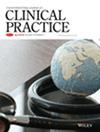Understanding Risk Factors and Population Attributable Fractions for Ever-Terminated Pregnancy in Bangladesh: Insights From Bangladesh Demographic and Health Survey Data (2014–2022)
Abstract
Background
Pregnancy termination (PT) poses significant public health challenges for women in low- and middle-income countries such as Bangladesh, yet understanding its trends and risk factors remains limited. This study aims to address this gap by analyzing the associated risk factors and population attributable fractions (PAFs) for PT in Bangladesh.
Methods
This study analyzed data from Bangladesh Demographic and Health Surveys (2014–2022) using consistent methodologies among women of reproductive age. Logistic regression models and PAF were used to assess the risk factors for PT and quantify their contributions, using a 5% level of significance.
Results
A total of 46,410 records were analyzed in this study, comprising 17,071 from 2014, 19,508 from 2017 to 18, and 9831 from 2022. The overall prevalence of PT was 20.62%. Year-specific rates were 19.21% in 2014, 20.21% in 2017-18, and 23.86% in 2022. Across all years, significant risk factors for PT included a maternal age of ≥ 20 years (AOR = 2.70, 95% CI: 2.39–3.04), being employed (AOR = 1.18, 95% CI:1.12–1.23), and overweight/obese (AOR = 1.20, 95% CI: 1.14–1.26), having ≥ 2 children (AOR = 1.32, 95% CI: 1.24–1.40), residing in urban areas (AOR = 1.09, 95% CI: 1.04–1.15), and first sex before 18 years of age (AOR = 1.10, 95% CI: 1.04–1.17), all of which were associated with an increased risk of PT. PAF analysis highlighted maternal age (≥ 20 years) as the most influential factor, accounting for 60.59% of PT risk, followed by ≥ 2 children (18.59%), overweight/obese (8.82%), first sex before 18 years (6.76%), and employment status (6.67%).
Conclusions
This study identifies key risk factors for PT in Bangladesh, including maternal age, working status, obesity, and first sex before 18 years of age. To mitigate these risks, targeted public health interventions, reproductive health education, and improved prenatal care are essential to ensure better maternal health and reducing PT prevalence in Bangladesh.


 求助内容:
求助内容: 应助结果提醒方式:
应助结果提醒方式:


